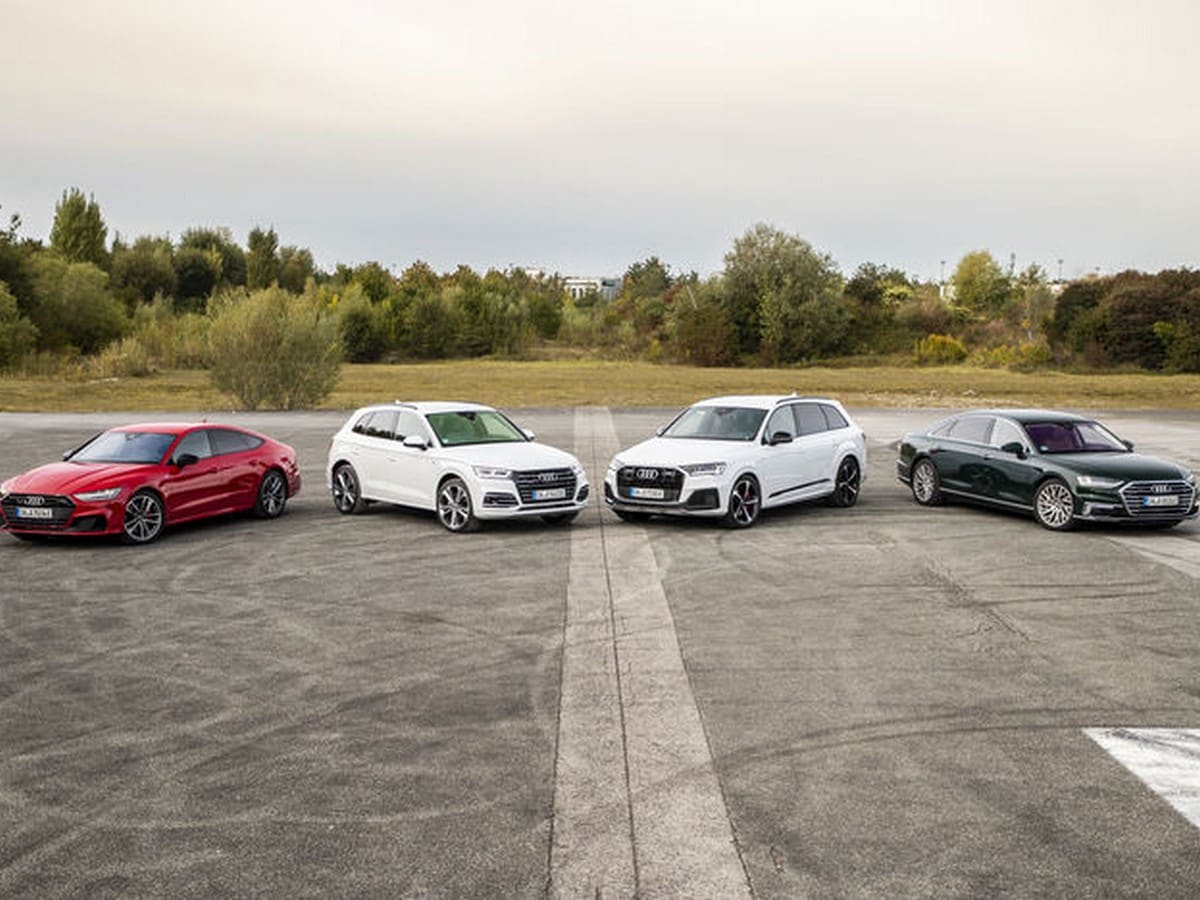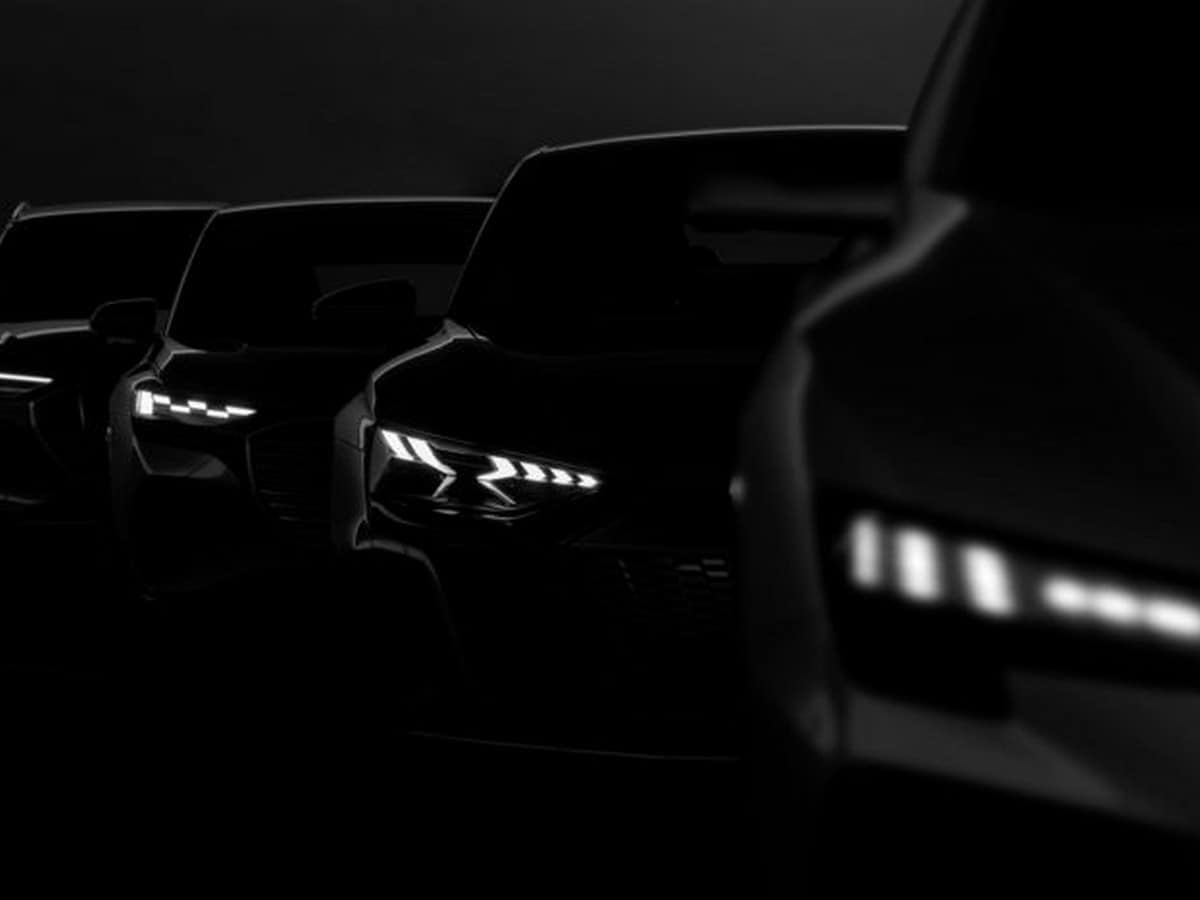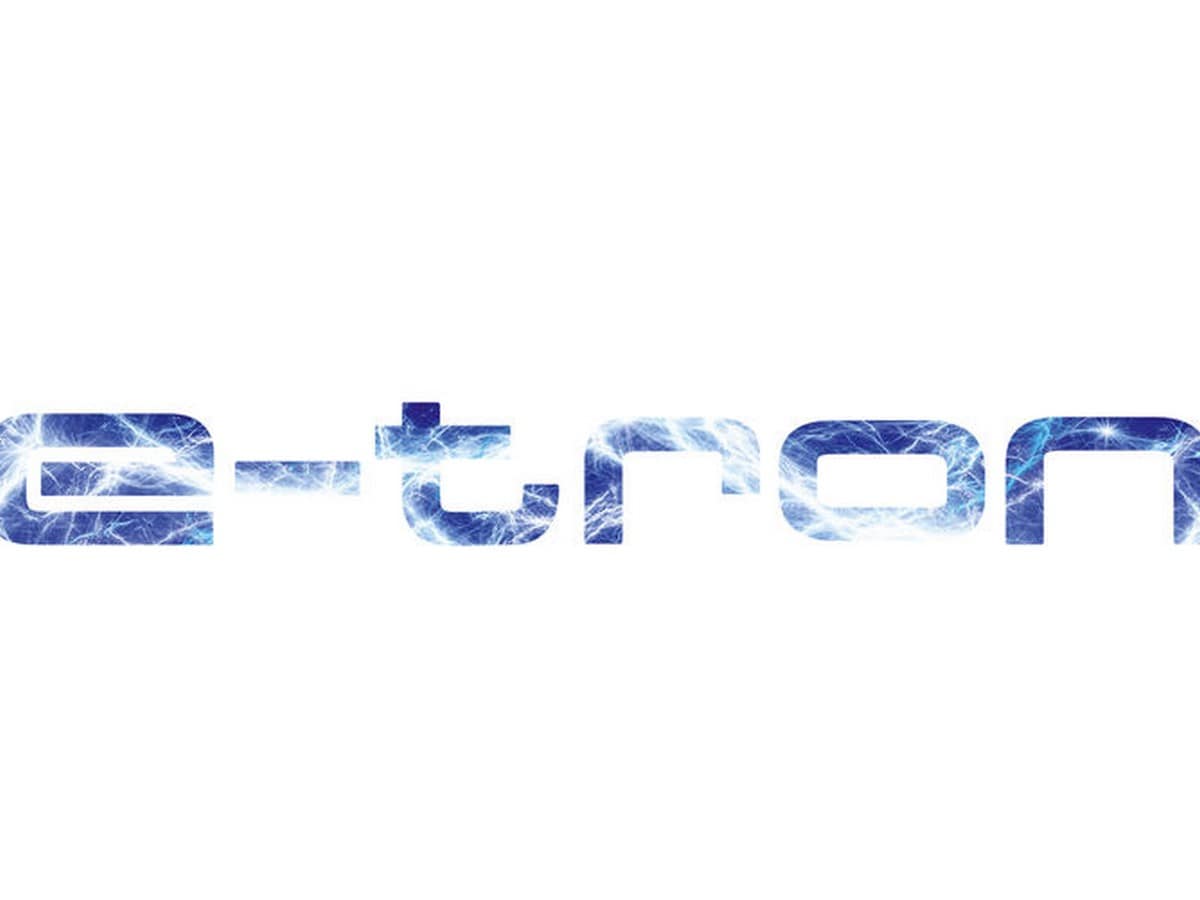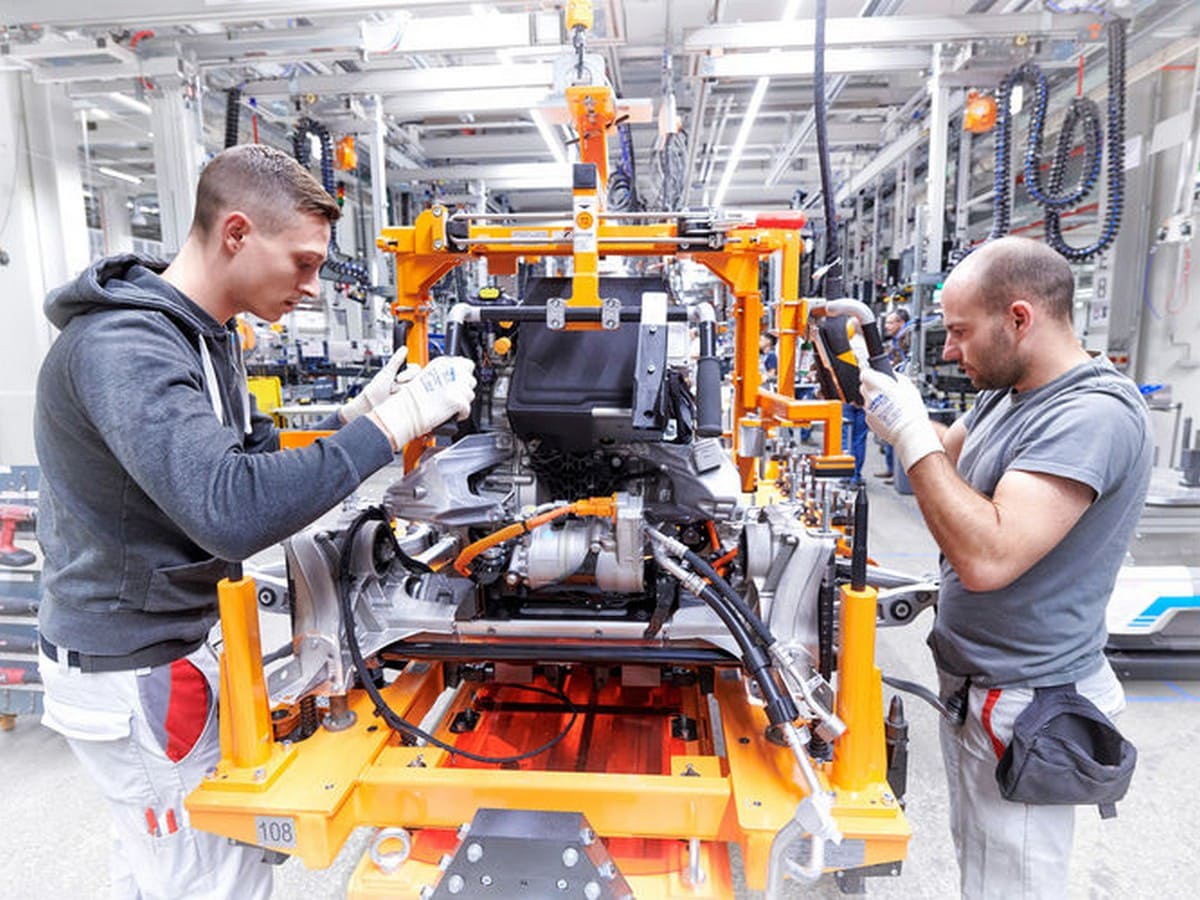- New models will include Battery Electrics and Plug-in Hybrids
- 30 electrified models by 2025, 20 will be pure electrics
- Platforms shared with Porsche and Volkswagen.
Audi’s ambitious program includes a first wave of PHEV models in the A7, A8, Q5 and Q7 lineups, of which three will be part of the 2020 model range for the U.S. The Q5 is first, expected by the end the end of 2019, with A7 and A8 to follow. No firm plans were announced for the Q7 PHEV to be sold here yet.
The PHEV models will come with standard Quattro all-wheel drive. Electric-only range has not been locked down for the U.S. yet, but will probably be between 20 – 24 miles. Fuel economy figures are also pending.
Engine/transmission choices vary for PHEVs
Q5 and A7 will use a turbocharged 2.0-liter 4-cylinder gasoline engine and an electric motor. Total system output is 362 hp and 369 lb-ft of torque. A8, the flagship sedan of the Audi lineup, will use a turbocharged 3.0-liter V6 gasoline engine and an electric motor for a total system rating of 443 hp and 516 lb-ft of torque. Peak performance from the PHEV models should be about the same as the current gasoline-only S models, but with lower fuel consumption and CO2 emissions.
Q5 and A7 PHEV models will use a 7-speed S tronic dual-clutch automatic transmission (DCT), while A8 PHEV will come with an 8-speed tiptronic conventional automatic transmission. In each case, the electric motor is integrated into the powertrain, between the gas engine and the transmission. This allows the system to use the electric motor as a boost to the gas engine in certain situations, for sporty performance. The powertrain uses the electric motor to help with deceleration, teaming up with the hydraulic brakes to slow the vehicle in braking operations above 0.3 g of deceleration and recapturing energy at the same time. The amount and blend of electric motor/hydraulic brake action varies depending on the drive mode selected. The PHEVs can also deactivate the gasoline engines during deceleration (glide mode) for additional efficiency, restarting the engines with the electric motor when appropriate.
Lithium ion battery packs
The electric motor on the new PHEV models will be powered by a liquid-cooled lithium-ion battery housed under the luggage load floor. The battery can store up to 14.1 kWh of charge, and is rated at 385 volts. A 7.7 kW onboard charger can deliver a full charge from empty in two hours 25 minutes at Level 2 (240 volts) or 16 hours 36 minutes at Level 1 (120 volts). The MyAudi smartphone app will allow owners to manage and monitor charging status, vehicle pre-conditioning, security and other functions.
Pricing and other information for the Q5, A7 and A8 PHEV models will be announced closer to each vehicle’s launch date.
Four BEV platforms
Audi’s first BEV, the 2019 e-tron has already arrived in the U.S. It rides on a modified version of VW Group’s modular longitudinal platform (MLB evo), which also underlies a variety of Audi, Volkswagen and Porsche models, most of which are not electrified. As Audi and the VW Group move forward with electrification, they have developed three additional new platforms designed specifically for future EV use.
The J1 platform, which also underlies the recently debuted Porsche Taycan EV, forms the basis for the e-tron GT concept, which was first shown at the 2019 Los Angeles Auto Show. J1 is a performance platform, and the e-tron GT is a 4-door Gran Turismo sports car. The innovation of the GT is an 800-volt electrical architecture, which will allow the 90-kW battery to be charged from empty to 80 percent in about 20 minutes at a 350-kW DC Fast Charging station. The GT will have two permanently excited synchronous motors with a system output of 582 hp and 612 lb-ft of torque, capable of 0 – 62 mph acceleration runs of 3.5 seconds up to a top speed of 149 mph, and an estimated range of up to 248.5 miles on a single charge. The platform houses the battery in the vehicle’s floor, with recesses left in the rear-seat footwell to improve passenger comfort. The low placement of the battery and low, fast roofline help deliver a low center of gravity, and Quattro all-wheel drive takes advantage of this feature to sharpen handling. The J1 platform allows for additional performance and suspension enhancements, including all-wheel steering, sport differentials and adaptive dampers.
MEB platform dedicated to EVs
The modular electrification toolkit (MEB) platform will take over where the modular transverse toolkit (MQB) platform left off, as the workhorse of the VW Group’s BEV lineup, supporting future compact and mid-size all-electric models, both crossovers and sedans. The first Audi example is the Q4 e-tron. Due to the lesser space requirements of an electric drive system, the front section of the Q4 e-tron is shorter than that of a gasoline-engined Q3, while the overall vehicle length is about the same as the compact gas SUV. The Q4 e-tron’s interior, by contrast, is at least mid-sized – comparable to a current gasoline Q5’s cabin. Q4 e-tron can include dual-motor (front and rear) all-wheel drive, as well as entry-level single-motor with rear-wheel-drive.
Finally, the premium platform electric (PPE) platform has been developed jointly by Audi and Porsche for future full-size and luxury models. This high-tech, scalable architecture will underlie upper mid-size to large all-electric SUVs, Sportbacks and Avants. All PPE vehicles will be fitted with one electric motor at the rear, with top-of-the-line models receiving a second motor on the front axle for all-wheel drive capability. The platform will incorporate 800-volt operating capacity, and 350 kW charging. Short front and rear overhangs will be possible, with greater interior lengths than current luxury models. Thanks to the layout, no transmission tunnels will intrude into the cabin floor.
Charging up the infrastructure
Audi and the VW Group have already begun ramping up the charging infrastructure in Europe, and have made substantial investments in Electrify America to bolster the grid in the U.S. E-tron buyers receive 1,000 kWh of charging at Electrify America’s charging stations at no additional cost. Recognizing that home charging will play a large part in keeping EVs topped off here in North America, Audi has coordinated with Amazon Home Services for easy Level 2 charger installation in private homes and locations.











